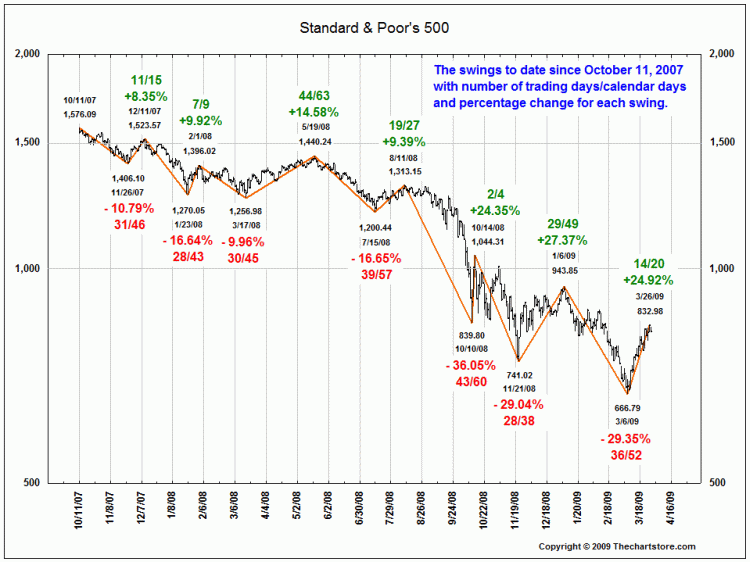|
|
If you want to know what the pound is going to do against the dollar on any given day at the moment, you might be as well getting up early to stand and assess the demeanour of the foreign exchange dealers as they troop into their gleaming buildings.
How are they feeling? Do they have a spring in their step or are they weighed down by lead boots? Are they grinning or frowning?
A certain pattern has become almost tediously familiar as June has progressed.
Sterling gains a couple of cents on a day on which the so-called "risk appetite" of the market is up. It loses a couple of cents when traders start to worry about the economic outlook.
Often, these relatively sharp short-term gyrations occur on days when there is a dearth of fresh economic data. They are driven by little other than "sentiment". And sentiment is a fickle thing indeed.
Yesterday, the pound jumped back above $1.65 and was trading around $1.6530 last night. This was (surprise, surprise) up about two cents on its close of $1.6320 in London on Thursday.
Similarly predictable was the reason for yesterday's move. The latest burst of optimism that the global financial and economic crisis could be moderating fuelled demand for currencies which are perceived to be higher risk - notably sterling - and took the shine off the safe- haven dollar.
We should, perhaps, not be surprised that it has been mood swings as much as anything else which have been driving the sterling-dollar rate in the past few weeks.
If the recent turmoil has hammered home anything, it is that financial markets are all too often far from rational.
More people are realising at last that the efficient market hypothesis - that financial markets reflect all publicly available information - is deeply flawed.
This is belated recognition of something that should, through so many examples of mis-pricing of shares, currencies or whatever, have been blindingly obvious to many more people over the years and decades. Better late than never, though.
Beyond the daily movements, foreign exchange traders have woken up in recent months to the absurdity of the extent to which the euro had climbed against sterling.
The euro, launched in 1999, hit a lifetime high of 98.03p on December 30 last year. This was a long, long way above the sub-67p levels at which it traded during July 2007.
This spike was based largely on a belief - misplaced as it has turned out to be - that the now 16-nation eurozone would miss out on the worst of the economic fallout from the global credit crisis.
There was some justification for this view, in that eurozone banks generally had less direct exposure to the financial crisis than those in the UK and US. However, the single currency's spike seemed overdone even before it emerged that the eurozone was being hit even harder than the UK economy.
The eurozone giant Germany, for example, has been hammered by the collapse in world trade which stemmed from the credit crisis because its economy is so dependent on industry and exports.
When the economic data and survey evidence revealing the extent of the eurozone's troubles really began to flow, the reaction of foreign exchange markets was puzzling.
Although the euro traded below 90p for some of January and much of February, it spiked above 94p again in March. It appeared to be defying gravity.
The euro was last night trading around 85.2p, with foreign exchange traders having woken up in the last three months to the relative states of the UK and eurozone economies.
The UK maybe does face greater economic challenges in the medium term than the eurozone, given public-sector debt issues and the part that exports will have to play in economic recovery as domestic consumers struggle.
But sterling still looks well below long-term fair value against the euro, and it is easy to see further recovery by the pound against the single currency. The pound looks closer to long-term fair value against the dollar now, which may be another reason for the yo-yoing of this "cable" rate this month.
On the export front, the UK's manufacturing sector is relatively small. Strathclyde University's Fraser of Allander Institute, a respected economic think-tank, this week highlighted the challenges facing Scotland, where manufacturing accounts for only about 14% of economic output.
Sterling's recent weakness has made UK manufacturers more competitive in overseas marketplaces. As well as hitting a record low against the euro on December 30, the pound hit a 23-year low of $1.3502 on January 23.
While the pound's recovery in recent months against the euro and dollar may put a bigger smile on the faces of those travelling overseas for the summer holidays, it will be causing furrowed brows among manufacturers.














0 comentários:
Post a Comment